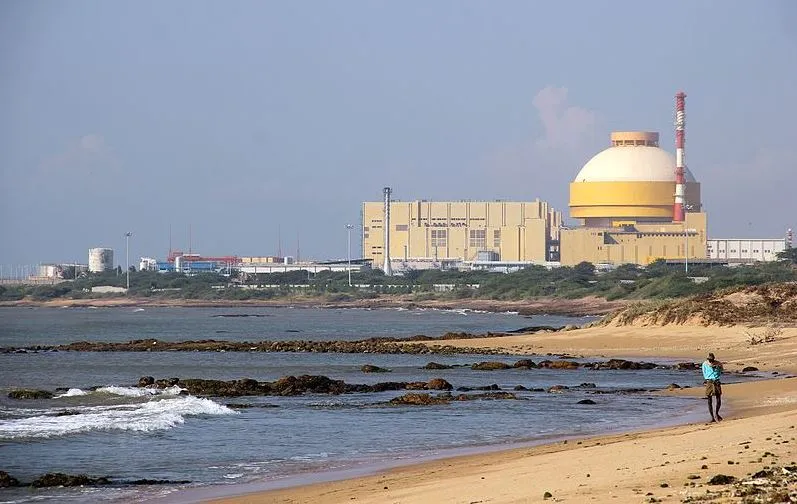
India's massive plan to build 12 nuke reactors is "fraught with risk": study
Projects are feared to be not economically and financially possible.
The Institute for Energy Economics and Financial Analysis recently published a report that explores what it believes are unacceptably high risks and costs of the Indian government’s proposal to build 12 new nuclear reactors.
The study, “Bad Choice: The Risks, Costs and Viability of Proposed U.S. Nuclear Reactors in India,” finds the plan, which would put six reactors each at Kovvada and Mithi Virdi, to be fraught with financial and operational hazard.
David Schlissel, IEEFA’s director of resource planning analysis says that firstly, the Kovvada Project involves a new untested ESBWR reactor design from GE-Hitachi. "It has never been operated at a commercial nuclear plant and is not under construction anywhere else," he said.
Here's more from Davis Schlissel:
The history of such untested first-of-a-kind reactors shows that they typically cost far more and take far longer to build than expected and that they experience unanticipated problems both during construction and when they begin commercial operations.
Recent experiences in the U.S. and Europe with building new reactors with untested designs illustrates the typical difficulties:
The estimated cost of the four new design Westinghouse A1000 reactors under construction in the U.S. has increased by more than 20 percent since construction began three years ago, and the reactors’ estimated in-service dates have slipped by about three years. Additional cost increases and schedule delays at these projects are likely, if not certain.
Even more striking is that the estimated costs of building the new design European Pressurized Reactors (EPRs), in Finland and France have more than tripled since construction began. The scheduled completion of the plant in Finland has slipped by nine years, from 2009 to 2018, while the scheduled opening of the EPR in France has slipped by six years.
Our first conclusion on the Kovvada project is that it will be very expensive to build and that the first units probably will not produce electricity for the grid before 2031. That’s even if construction begins early next year, which is unlikely given that land acquisition has not started, a contract has not been signed, and GE has said it does not want to invest in nuclear in India unless it is protected against liability for nuclear accidents.
Additionally, we’ve concluded that unless the Indian government provides very large and long-term subsidies, the tariffs for electricity from Kovvada will be very high, with first-year tariffs in the range of 19.80 to 32.77 rupees per kilowatt hour (a conservative estimate by our measure). This is some five to nine times the current cost of generating power in India.
Our third finding on Kovvada is that the total investment to build the project will be massive, somewhere between 4 lahk crore rupees to 6.8 lahk crore rupees, which converts to $60 to $100 billion. This range could be even higher given the uncertainty associated with the project’s status and the problems that are typical of first-of-their-kind plants. It is questionable as to whether the Indian government will be able to finance such a project (along with the one at Mithi Virdi) while continuing to pursue its current investments in coal mines, coal-rail freight, renewable resources and energy efficiency.
Our fourth finding on Kovvada is that it brings substantial operational risk because there is no operating experience with an ESBWR nuclear plant. There is no evidence as to how well the reactors at Kovvada will operate, how much they will cost to run, and how much power they actually will generate. All of these unknowns will affect the tariffs for the electricity from Kovvada.













 Advertise
Advertise











